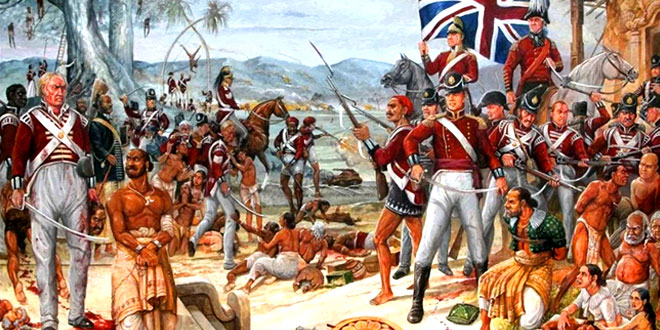Question: Describe Education in pre-British times.
Answer:
- Before the arrival of the British, the system of education in India was very flexible.
- There were ‘pathshalas’ and ‘madrassas’ in which a few students were taught by their teacher.
- There were no prescribed textbook.
- All teaching was imparted orally, generally at the house of the teacher.
- There was no fixed curriculum and the teacher taught whatever he deemed best for his students.
- Sanskrit, Persian and mathematics were the most popular subjects.
- Science and geography were not taught.
- There was also no system of examinations.
- The teacher had a lot of freedom quite unlike the system prevalent today.
Question: Who was sir William Jones? Why did he study ancient Indian texts?
Answer: Sir William Jones was an orientalist arrival in Calcutta in 1783. Interest in the Sanskrit language. He studied ancient Indian texts, different subjects and translated many of them.
- Asiatic Society of Bengal in 1784. He argued that Indian learning should be promoted in India. He wanted the government to set up institutions where ancient Indian texts could be taught. Sanskrit and Persian were to be the medium of instruction.
- The Governor-General at this time was Warren Hastings. He was a supporter of the Orientalist view. He helped set up a madrassa in Calcutta to promote the study of Islamic law. In 1792, Jonathan Duncan set up the Benaras Sanskrit College at Benaras (now Varanasi) to encourage the study of ancient Sanskrit texts.
Question: What was the ‘downward filtration theory’?
Answer: The British believed that by educating a few Indians from the upper and middle classes, the government was actually paving way for the education of the masses-for these handful of Indians were expected to educate the masses and spread modern ideas. This was the ‘downward filtration theory’, called so because education was expected to filter downwards. This system, however, never worked in practice.
Question: Why did Mahatma Gandhi oppose western education? What kind of education did he advocate for India?
Answer: Mahatma Gandhi was against western education. He felt that such an education was not rooted in the reality of India. He wanted an education that would help Indians take pride in their past. He valued practical knowledge more than learning from books. He wanted all students to learn a craft do that they would become self-sufficient and develop a sense of dignity for labour. This, he believed, would lead to the development of the body, mind and soul. This was the essence of Gandhiji’s scheme of Nai Talim (New Education).
Question: What was the issue of disagreement between the Orientalists and the Anglicists?
Answer: Many British did not agree with the Orientalists vision of learning. They believed that Indian learning was unscientific and often supported superstitions. James Mill was of the opinion that to be useful, education needed to be practical. So the Anglicists felt that Indians should be imparted western learning.
Question: The wood’s Despachat emphasized that the British would benefit greatly if western education was promoted in India. What were these benefits?
Answer: They are:
- Western learning enable Indians to realize the advantages of an expanding trade and commerce.
- Western learning would expose Indians to the western way of life and create in India a demand for British goods.
- Western learning would develop among Indians the skills required for administration and ensure a continuous supply of people to work at the lower levels of the government.
Question: What were the educational guidelines laid down by the wood’s Despatch?
Answer: In 1857, universities were set up in Calcutta, Bombay and Madras. The medium of instruction at the primary level was to be vernaculars while at the higher levels it would be English. Education departments were to be set up in all the provinces. They were to supervise education and provide financial aid to the educational institutions in the province. Teacher recruitment and and training institutions were to be set up all over the country.
 Class Notes NCERT Solutions for CBSE Students
Class Notes NCERT Solutions for CBSE Students



I want summary
Please give summary of this chapter or flow charts or something!
Actually I know the question answer but I want the summary.
But this question answer help me too!